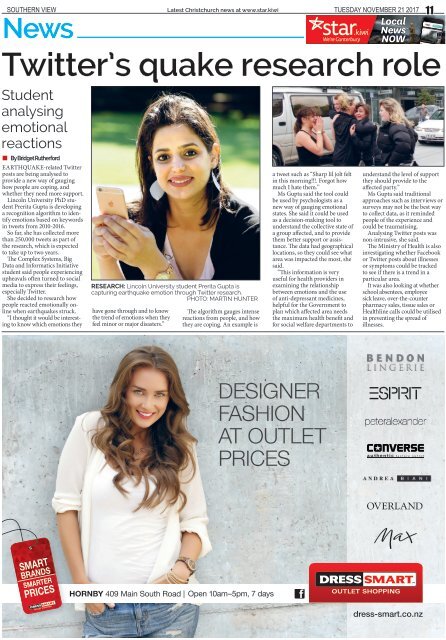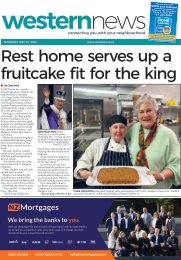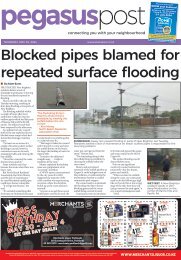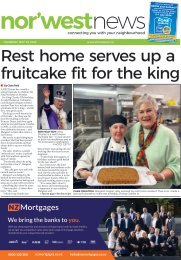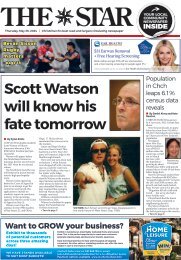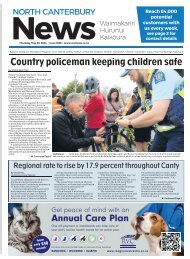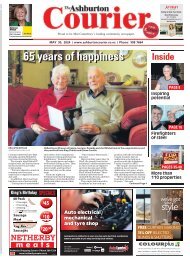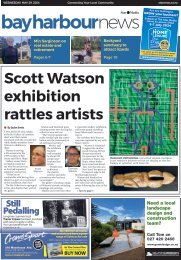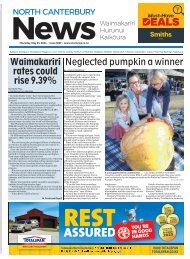Southern View: November 21, 2017
Create successful ePaper yourself
Turn your PDF publications into a flip-book with our unique Google optimized e-Paper software.
SOUTHERN VIEW Latest Christchurch news at www.star.kiwi<br />
11<br />
News<br />
Tuesday <strong>November</strong> <strong>21</strong> <strong>2017</strong><br />
Local<br />
News<br />
Now<br />
Twitter’s quake research role<br />
Fire rages, homes at risk<br />
Student<br />
analysing<br />
emotional<br />
reactions<br />
• By Bridget Rutherford<br />
EARTHQUAKE-related Twitter<br />
posts are being analysed to<br />
provide a new way of gauging<br />
how people are coping, and<br />
whether they need more support.<br />
Lincoln University PhD student<br />
Prerita Gupta is developing<br />
a recognition algorithm to identify<br />
emotions based on keywords<br />
in tweets from 2010-2016.<br />
So far, she has collected more<br />
than 250,000 tweets as part of<br />
the research, which is expected<br />
to take up to two years.<br />
The Complex Systems, Big<br />
Data and Informatics Initiative<br />
student said people experiencing<br />
upheavals often turned to social<br />
media to express their feelings,<br />
especially Twitter.<br />
She decided to research how<br />
people reacted emotionally online<br />
when earthquakes struck.<br />
“I thought it would be interesting<br />
to know which emotions they<br />
RESEARCH: Lincoln University student Prerita Gupta is<br />
capturing earthquake emotion through Twitter research.<br />
PHOTO: MARTIN HUNTER<br />
have gone through and to know<br />
the trend of emotions when they<br />
feel minor or major disasters.”<br />
The algorithm gauges intense<br />
reactions from people, and how<br />
they are coping. An example is<br />
a tweet such as “Sharp lil jolt felt<br />
in this morning!!!. Forgot how<br />
much I hate them.’’<br />
Ms Gupta said the tool could<br />
be used by psychologists as a<br />
new way of gauging emotional<br />
states. She said it could be used<br />
as a decision-making tool to<br />
understand the collective state of<br />
a group affected, and to provide<br />
them better support or assistance.<br />
The data had geographical<br />
locations, so they could see what<br />
area was impacted the most, she<br />
said.<br />
“This information is very<br />
useful for health providers in<br />
examining the relationship<br />
between emotions and the use<br />
of anti-depressant medicines,<br />
helpful for the Government to<br />
plan which affected area needs<br />
the maximum health benefit and<br />
for social welfare departments to<br />
understand the level of support<br />
they should provide to the<br />
affected party.”<br />
Ms Gupta said traditional<br />
approaches such as interviews or<br />
surveys may not be the best way<br />
to collect data, as it reminded<br />
people of the experience and<br />
could be traumatising.<br />
Analysing Twitter posts was<br />
non-intrusive, she said.<br />
The Ministry of Health is also<br />
investigating whether Facebook<br />
or Twitter posts about illnesses<br />
or symptoms could be tracked<br />
to see if there is a trend in a<br />
particular area.<br />
It was also looking at whether<br />
school absentees, employee<br />
sick leave, over-the-counter<br />
pharmacy sales, tissue sales or<br />
Healthline calls could be utilised<br />
in preventing the spread of<br />
illnesses.<br />
DESIGNER<br />
FASHION<br />
AT OUTLET<br />
PRICES<br />
SMART<br />
BRANDS<br />
SMARTER<br />
PRICES<br />
HORNBY 409 Main South Road | Open 10am–5pm, 7 days


